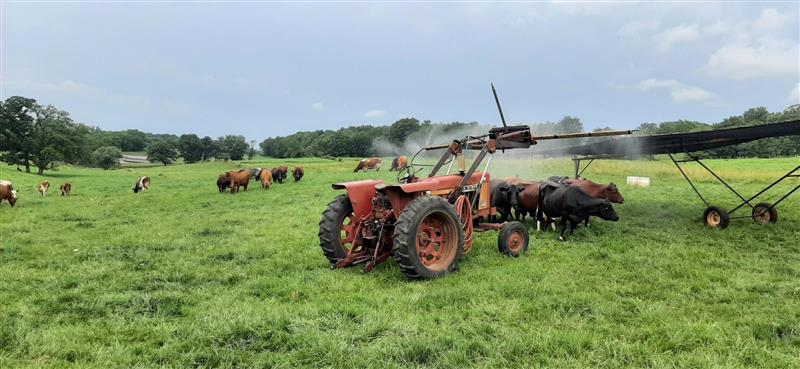As many farms across the U.S. are dealing with high temperatures, keeping your livestock cool and comfortable can be challenging. Especially during the hot summer months, it is important to keep your livestock comfortable to prevent stress, decrease the risk of disease, and maximize production.
High temperatures require strong management and planning. Monitor weather forecasts and develop a plan to protect your animals. No matter your species of livestock, heat can be damaging. There are a few things you can do to ensure your livestock are protected.
Easy access to water and feed
Access to cool, clean water is essential during hot weather. Without water, animals quickly become dehydrated, sick, and may die. Water should be easily accessible, under shade, and large enough to support the number of animals in the pen. If you have a larger number of animals in a pen, it is beneficial to have multiple watering troughs to ensure all have access to water. It is also important to secure water troughs so they aren’t able to overturn and should be checked and filled often.
Your livestock should easily access the feed. It is important to keep feed fresh, as it can easily spoil in hot weather. Feed frequently in smaller amounts to keep feed fresh and track their intake.
Provide shaded areas
In direct sunlight, animals become heat-stressed much quicker. Ensure all livestock can access shade in an area with good wind flow. If providing shade in a shelter, ensure that the shelter allows wind to access the livestock to cool them. Make sure shelters have adequate space to accommodate all animals in the pen. If needed, divide the animals into small groups. In shelters, make sure bedding is clean and dry to prevent ammonia and heat buildup. Clean, dry dirt is best during the summer months.
In extreme heat, using water sprinklers and fans can help keep livestock cool, especially pigs and cattle. Pigs should also have access to water or mud for wallowing.
Handling risks
In extreme heat, animals become stressed more quickly. Avoid handling or transporting livestock on hot days unless necessary. If needed, move animals during cooler parts of the day, like in the evening or early morning.
If animals need to be transported, plan to minimize heat stress and its effects. Make sure to offer water often, plan out your route, and, if needed, stop and spray off livestock. Reducing the number of animals hauled can increase airflow and comfort for the livestock you are hauling.
If you are facing hot weather, make sure to plan to prevent and treat heat stress. Make a plan to identify health concerns with animals, such as panting or lethargy. If you have livestock that have previously dealt with a health concern, such as a respiratory event, make a plan to ensure that the animal is comfortable.
For more information on preventing and identifying heat stress, check out the resources below to keep your animals comfortable.
Resources:
PennState Extension: Heat Stress and Beef Cattle
University of Wisconsin-Madison: Animal Handling During Heat Stress

